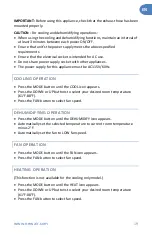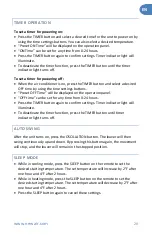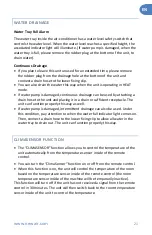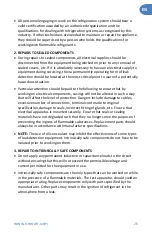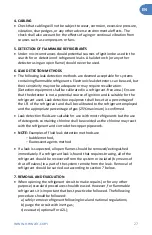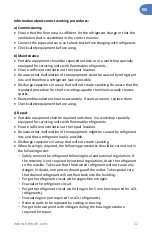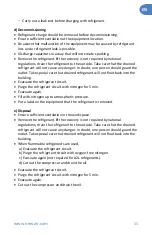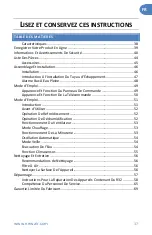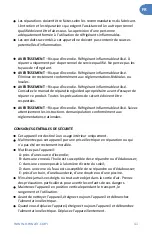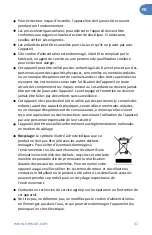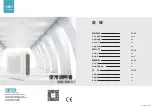
EN
www.newair.com
27
4. CABLING
•
Check that cabling will not be subject to wear, corrosion, excessive pressure,
vibration, sharp edges, or any other adverse environmental effects. The
check shall also account for the effects of aging or continual vibration from
sources such as compressors or fans.
5. DETECTION OF FLAMMABLE REFRIGERANTS
•
Under no circumstances should potential sources of ignition be used in the
search for or detection of refrigerant leaks. A halide torch (or any other
detector using an open flame) should never be used.
6. LEAK DETECTION METHODS
•
The following leak detection methods are deemed acceptable for systems
containing flammable refrigerants. Electronic leak detectors can be used, but
their sensitivity may not be adequate or may require recalibration.
(Detection equipment shall be calibrated in a refrigerant-free area.) Ensure
that the detector is not a potential source of ignition and is suitable for the
refrigerant used. Leak detection equipment shall be set at a percentage of
the LFL of the refrigerant and shall be calibrated to the refrigerant employed
and the appropriate percentage of gas (25% maximum) is confirmed.
•
Leak detection fluids are suitable for use with most refrigerants but the use
of detergents containing chlorine shall be avoided as the chlorine may react
with the refrigerant and corrode the copper pipework.
•
NOTE:
Examples of fluid leak detection methods are
–
bubble method,
–
fluorescent agents method
•
If a leak is suspected, all open flames should be removed/extinguished
immediately. If a refrigerant leak is found that requires brazing, all of the
refrigerant should be recovered from the system or isolated (by means of
shut off valves) in a part of the system remote from the leak. Removal of
refrigerant should be carried out according to section 7 below.
7. REMOVAL AND EVACUATION
•
When opening the refrigerant circuit to make repairs (or for any other
purpose) standard procedures should be used. However, for flammable
refrigerants it is important that best practice be followed. The following
procedure should be followed:
a) safely remove refrigerant following local and national regulations;
b) purge the circuit with inert gas;
c) evacuate (optional for A2L);







